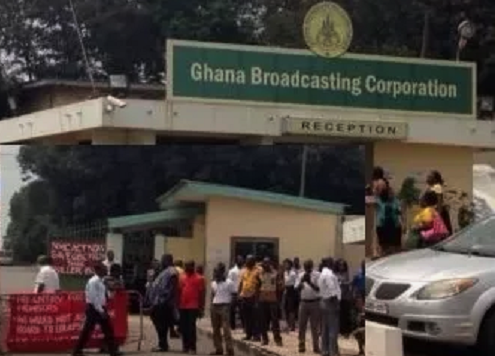Legacy Lives On: Nigerian Telcos Hold Fast to 2G/3G Despite 5G's Rise

The advent of 5G networks marks a significant leap in teleconnectivity, rendering older generations like 2G and 3G increasingly obsolete. While 5G and the preceding 4G networks represent the modern standard, telecommunications companies globally have invested substantially in their infrastructure. This evolution has led many operators to consider or actively pursue the decommissioning of older network generations, particularly 3G.
A recent report by GSMA Intelligence’s Spectrum Navigator highlights a clear trend in Europe: 22 telcos have already completed the shutdown of their 3G networks, with an additional 41 planning to do so by 2030. Radhika Gupta, GSMA Senior Director and Head of Data Acquisition, explained that European telcos are prioritizing 3G decommissioning over 2G due to a perceived minimal impact on customer experience. In contrast, 2G networks often remain active to support crucial public services, including utilities and emergency networks.
The rationale behind this rapid transition in Europe is rooted in efficiency and resource optimization. Greg McCall, Chief Networks Officer at UK operator BT, noted that despite plummeting usage, their nationwide 3G network consumed considerable energy. He revealed that 3G data usage had fallen to less than 0.6% of all downloaded data and only 7% of voice traffic on the EE network, yet it accounted for up to 35% of the total power consumed by their mobile network. Shutting down 3G, he stated, would yield energy savings equivalent to fully charging four billion smartphones.
However, the narrative differs significantly in Nigeria. While countries like South Africa lead Africa in 5G adoption, Nigerian telcos are in no hurry to decommission their older 2G and 3G networks. This reluctance is primarily driven by high usage and wide coverage of these legacy technologies within the country, contrasting sharply with the low usage driving shutdowns in Europe.
One critical factor for maintaining 2G and 3G in Nigeria is their extensive reach. Mohammed Rufai, Chief Technical Officer of MTN Nigeria, indicated that 90% of Nigeria’s population has access to 2G technology, and over 83% has 3G coverage. This stands in stark contrast to 4G, which was available to only 37% of the Nigerian population as of March 2022, and 5G, which is still nascent and deployed in fewer than five Nigerian cities. For telcos, relinquishing these older, widespread networks would mean sacrificing their broad customer base in a highly competitive market.
Furthermore, the high usage of 3G is a compelling reason for its continued operation. A 2022 report by the Alliance for Affordable Internet (AAI) revealed that a significant 88% of Nigerians lack access to smartphones capable of 4G-like speeds for daily internet use or meaningful connectivity. While only 12% of Nigerians have meaningful connectivity, this figure surpasses Ghana's 7%, though it lags behind South Africa's 13%. MTN's CTO confirmed their continued investment in 3G, acknowledging that many subscribers still rely on 2G and 3G devices and cannot be disenfranchised by premature shutdowns. He emphasized the necessity of maintaining older technologies for those who haven't yet upgraded their devices.
Cost considerations also play a role. Although experts debate whether 4G inherently consumes more data per task than 3G, the higher speeds of 4G networks typically encourage increased online activity, such as more browsing, social media engagement, and video streaming. This heightened activity invariably leads to greater mobile data consumption, which is a significant financial burden for a Nigerian population with a minimum wage of N30,000, where a smartphone often remains a luxury. Therefore, many users prefer to stick with their feature phones and 3G services.
Finally, spectrum conversion offers another pragmatic reason for Nigerian telcos to maintain their 3G infrastructure. The spectrum allocated for 3G services can be repurposed to provide 4G and 5G services in the future. Rather than outright decommissioning, maintaining and investing in these networks allows for a cost-cutting strategy where existing investments can be utilized for higher technologies as device adoption progresses. Mohammed Rufai further explained that the license and network resources used for 3G are still usable for higher technologies. Given the substantial cost of 5G spectrum (e.g., $273.6 million, excluding infrastructure), this conversion capability presents a financially sound approach for future network upgrades.
You may also like...
Embiid's Back! 76ers Star Returns After Nearly 8-Month Absence

Joel Embiid made a triumphant return to the court for the Philadelphia 76ers after an eight-month absence due to knee su...
Vegas Takes Over! Aces Crowned WNBA Champs, Parade Lights Up The Strip

The Las Vegas Aces celebrated their third WNBA championship in four years with a spectacular parade down the iconic Las ...
Shockwave in Hollywood: ‘9-1-1’ Actor Loses Landmark COVID Vaccine Lawsuit Against Disney!

"9-1-1" actor Rockmond Dunbar's lawsuit against Disney-owned 20th Television, alleging religious discrimination over COV...
Aged 99, Sir David Attenborough Smashes Emmy Record, Becomes Oldest Winner Ever!

Sir David Attenborough has become the oldest ever Daytime Emmy winner at 99, taking home the award for Outstanding Dayti...
Gucci Mane Reveals Past Peacemaking with Drake and Young Thug!

Gucci Mane reflects on his journey in rap, sharing how he apologized to Drake for a past Twitter tirade and extended for...
Country Legend Waylon Jennings' Lost Track 'Songbird' Dominates Billboard Charts!

"Songbird," a new collection of previously unheard recordings from Waylon Jennings, has earned the late country icon his...
Morena Baccarin Unpacks 'Sheriff Country' Character Mickey's Controversial Moral Code

In the new CBS series 'Sheriff Country,' Morena Baccarin stars as Sheriff Mickey Fox, a seasoned law enforcement officer...
Fire Country Shocker: Showrunner Breaks Silence on Season 4 Premiere Death and Wild Future

Season 4 of 'Fire Country' sees Edgewater and Station 42 grapple with the monumental death of Vince Leone, impacting Bod...




)